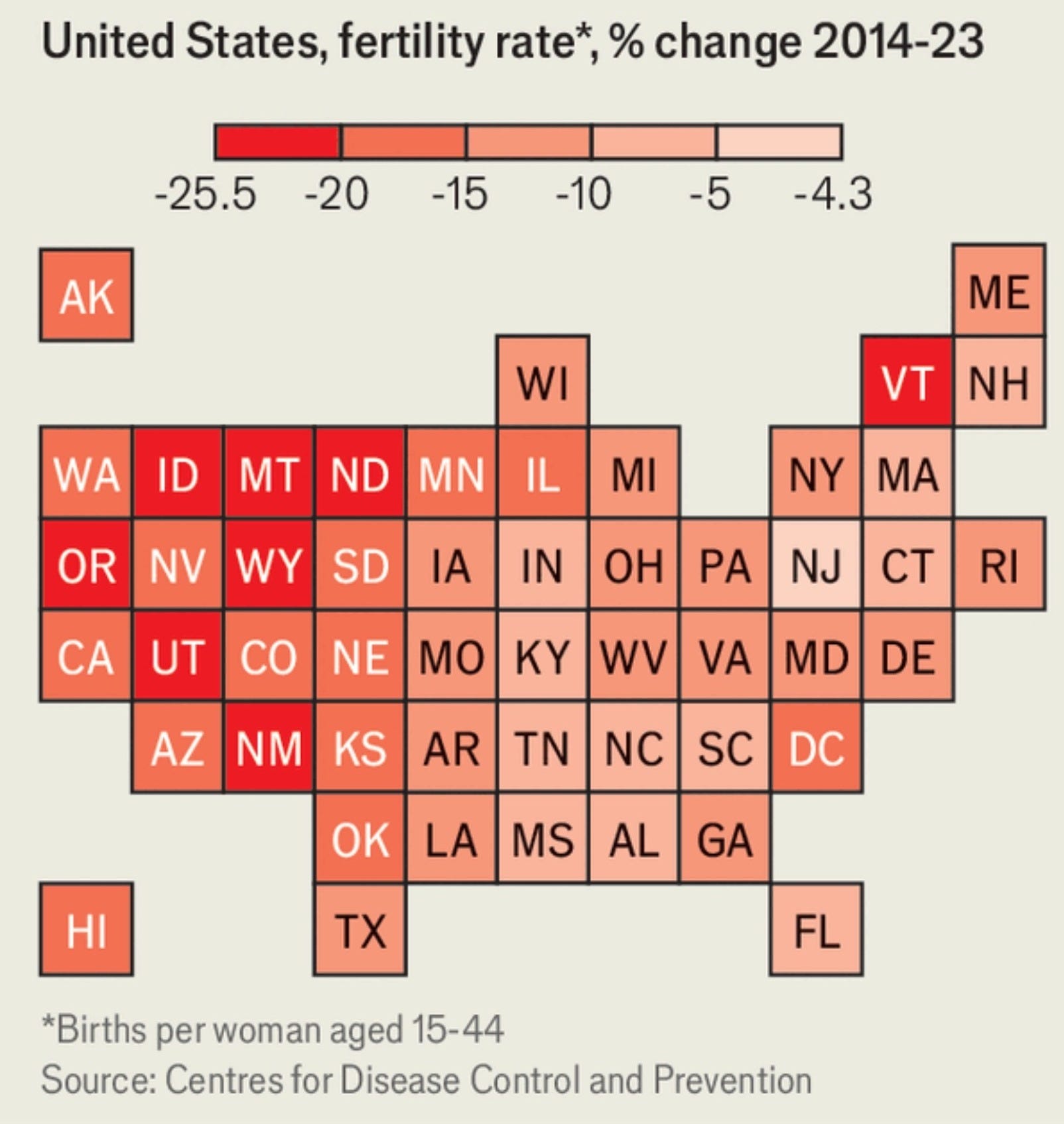August 12, 2025
Stop Blaming Career Women For America's Falling Fertility Rate

Amidst the swirling debates and finger-pointing concerning America’s plummeting birth rates, a clear yet overlooked narrative persists: it is not the career-driven women who are at fault. The United States, alongside various countries worldwide, is witnessing a significant drop in fertility rates, a trend unlikely to reverse without extreme measures that no one would advocate for in a free society.
Historical data reveals a stark decline from the average of five children per woman in 1960 to just 2.2 today globally, according to United Nations research. In the U.S., this number has dipped even lower to 1.6. Interestingly, New Jersey shows the smallest decline, posing questions about regional influences on fertility trends.
Reports from 'The Economist' highlight that the steepest declines are observed in states like Alaska, North Dakota, and Utah, which were previously considered high-fertility areas. This shift is more pronounced in rural regions and areas with generally lower educational attainment, challenging previous assumptions about demographic and cultural fertility drivers.
The causes of this downward trend extend beyond the simplistic blame on "immoral" career-oriented women, as some suggest. Rather, it reflects broader societal changes including increased access to birth control, greater female participation in the workforce, and enhanced autonomy for women compared to previous generations. These factors, among others, contribute significantly to the decision-making process regarding family planning.
Contrastingly, the lack of robust family support systems in the U.S. is glaring, especially when compared to countries like Finland, which, despite generous parental benefits, still experiences low birth rates. This points to a complex interplay of personal choice and socio-economic factors that simple policy adjustments might not easily rectify.
The narrative that women must choose between career and family is not only outdated but also detrimental. It disregards the diverse aspirations and capacities of women to effectively balance multiple roles in society. As discussions evolve, it becomes clear that respecting individual choices and enhancing support systems might offer a more balanced approach to addressing the challenges of declining fertility rates.
In conclusion, shifting the blame solely onto career-oriented women oversimplifies the multifaceted issue of falling birth rates. A more nuanced understanding of the socio-economic and cultural dynamics at play is crucial for fostering environments that support all choices, whether to have children, pursue careers, or both. This societal evolution may well redefine traditional roles and expectations, paving the way for more inclusive and realistic approaches to family planning and population growth.